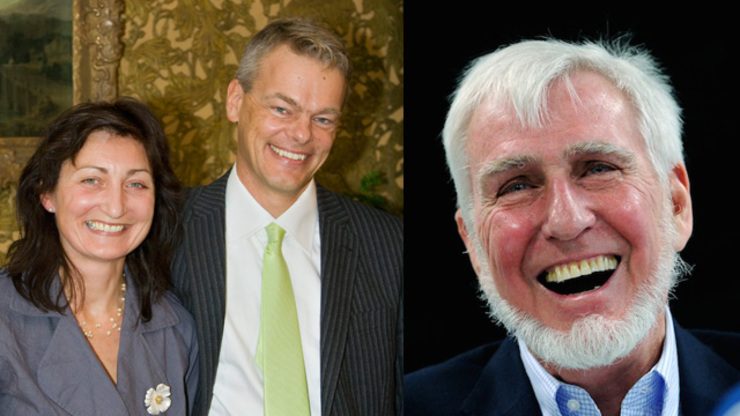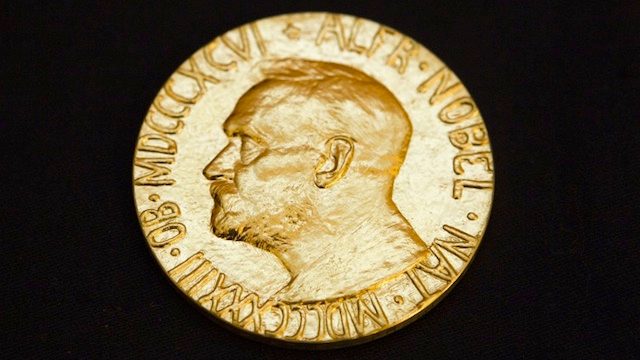SUMMARY
This is AI generated summarization, which may have errors. For context, always refer to the full article.

STOCKHOLM, Sweden (4th UPDATE) – British-American researcher John O’Keefe on Monday, October 6, won the Nobel Medicine Prize with a Norwegian couple, May-Britt and Edvard Moser, for discovering an “inner GPS” that helps the brain navigate.
They earned the coveted prize for identifying brain cells enabling people to orient themselves in space, with implications for diseases such as Alzheimer’s, the jury said.
“The discoveries of John O’Keefe, May-Britt Moser and Edvard Moser have solved a problem that has occupied philosophers and scientists for centuries,” it said.
“How does the brain create a map of the space surrounding us and how can we navigate our way through a complex environment?”

FULL COVERAGE: NOBEL SEASON 2014
Physiology/Medicine | Physics | Chemistry | Peace | Economic Sciences | Literature
O’Keefe, 74, told Agence France-Presse that his research explained how London taxi drivers were able to navigate 25,000 streets and know how to get from one to the other.
“In the same way that GPS allows you to locate yourself in an area or even on the surface of the Earth and then find your way to a desired location, it does exactly the same thing for the brain,” O’Keefe said.
“It tells you where you are, where you want to go.”
In 1971, he discovered the first component of the system, finding that in lab rats, specific cells in the brain were triggered when the animal was at a certain location in a room.
Other nerve cells were activated when the rat was at different places, leading O’Keefe to conclude that these “place cells” formed a map of the room.
Understanding Alzheimer’s better
More than three decades later, in 2005, May-Britt and Edvard Moser found another piece of the invisible positioning system.
They identified “grid cells” – nerve cells which generate a coordinate system, rather like longitude and latitude, and allow the brain to perform precise positioning and pathfinding.
The jury noted that sufferers of Alzheimer’s disease often lose their way and cannot recognize the environment.
A part of the brain where grid cells are located, called the entorhinal cortex, is closely linked to Alzheimer’s, said Torkel Klingberg, a professor of cognitive neuroscience and a member of the Nobel Assembly.
“That’s one of the first places that are affected, so what these discoveries could lead to is the understanding of the symptoms in Alzheimer’s and other diseases,” he told Agence France-Presse.
May-Britt Moser told the Nobel Foundation that she was “in shock” at winning and described how teamwork with her husband had facilitated the groundbreaking research.
“We have the same vision, we love to understand and we do that by talking to each other, talking to other people and then try to address the questions we are interested in, the best way we can think of,” she said.
Her husband, who was on a flight to Munich when the announcement came, only learned of the award when he stepped off the plane and was welcomed with flowers by airport officials – and discovered he had “about 120 missed calls.”
Animal rights controversy
Controversy hit the Nobel Committee’s decision when animal rights groups criticized the rat experiments that the research was based on.
“Awarding people who have spent decades inflicting terrible pain and suffering on countless animals in experiments is contrary to the otherwise progressive values of the Nobel Prize,” the People for the Ethical Treatment of Animals (PETA) said in a statement.
May-Britt Moser replied to the criticism, telling Agence France-Presse that the lab rats are “treated like humans” and that all work is done in accordance with Norwegian regulations.
O’Keefe, a professor at University College London, was born in 1939. May-Britt Moser, born in 1963, and her husband Edvard Moser, born 1962, are slightly younger than the average age of Nobel Medicine laureates of 58. Both are based at the Norwegian University of Science and Technology in Trondheim.
The winners will share the prize of eight million Swedish kronor ($1.1 million, 881,000 euros), with half going to O’Keefe.
Last year, the honor went to James Rothman, Randy Schekman and Thomas Suedhof, all of the United States, for their work on how the cell organizes its transport system.
In line with tradition, the laureates will receive their prize at a formal ceremony in Stockholm on December 10, the anniversary of founder Alfred Nobel’s death in 1896. – Rappler.com
Add a comment
How does this make you feel?
There are no comments yet. Add your comment to start the conversation.